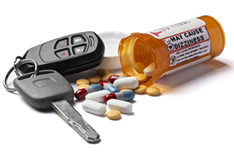Pandemic is impacting driving, too

Since the global pandemic has affected virtually all aspects of our lives, it’s not surprising that its reach extends to driving risk.
A US National Highway Traffic Safety Administration study found increases in the incidence of alcohol or drugs in fatally or seriously injured drivers and other motor vehicle crash victims during the COVID-19 pandemic compared to before the health crisis. Closer to home, the Traffic Injury Research Foundation (TIRF), based in Ottawa, surveyed a random sample of Canadian drivers about their attitudes and beliefs during the pandemic.
The US study reports on the behaviours of drivers as demonstrated through blood sample analysis. About 65 percent of drivers had significantly higher overall drug prevalence during the public health emergency compared to 51 percent before. Drivers also showed an increase in testing positive for two or more categories of drugs, going from 18 percent before to 25 percent during the public health emergency. Alcohol usage amongst injured drivers was also up during the pandemic at 28 percent compared to 22 percent before.
This study, released in October 2020, is not conclusive because of the limited sample size (about 3,000 people) and geographic coverage. Researchers could also not determine whether this study reflected seasonal patterns in drug and alcohol usage amongst drivers or whether drug- and alcohol-using drivers were more likely to be driving during the pandemic.
Notwithstanding these caveats, this study provides a cautionary snapshot about impairment risk.
While the Canadian survey and the US study are quite different in scope and methodology, they are both centred on the impact of the pandemic on driving risk.
The Canadian survey, released in November 2020, highlights that respondents self-reported higher rates of distraction, trouble focusing or risky driving behaviour compared to before the pandemic, as follows:
- 1 percent had more difficulty focusing while driving
- 5 percent of respondents were more likely to excessively exceed the posted speed limit
- 2 percent were more likely to be driving distracted
- 4 percent were more likely to drive within two hours of consuming alcohol, and
- 2 percent were more likely to drive within two hours of using drugs.
According to TIRF, “While these percentages may reveal only a minority of Canadians engage in these dangerous driving behaviours, they still represent well over a million drivers.” The Canadian survey did not differentiate between driving behaviours for pleasure or for work.
Similarly, the US study did not report on the number or proportion of people who were driving for work when they were injured, but it’s reasonable to assume at least some of them were working since 37 percent, or 1,123, of the participants were injured or killed during the lockdown period when travel for non-essential purposes was restricted.
Impairment is not a new risk but may be heightened as stress and worry about the pandemic continue to mount. Employers who are not already alert to this risk are encouraged to consult Road Safety at Work’s Impaired Driving Tool Kit. Another useful resource to address an additional negative effect of the pandemic is the Distracted Driving Tool Kit.
These are just two of several no-cost tool kits available from Road Safety at Work to help employers and drivers tackle a variety of road safety issues.